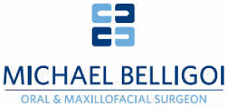People with obstructive sleep apnoea have disrupted sleep and low blood oxygen levels. The tongue is sucked against the back of the throat, which blocks the upper airway and airflow stops. When the oxygen level in the brain becomes low enough, the sleeper partially awakens, the obstruction in the throat clears, and the flow of air starts again, usually with a loud gasp. Repeated cycles of reduced oxygen levels lead to very serious cardiovascular problems. Additionally, these individuals suffer from excessive daytime sleepiness, depression, and loss of concentration.
In addition to a detailed history, a oral surgeon and other clinicians will assess the anatomic relationships in the face and mouth. A skull x-ray and sometimes a nasal camera can help work out level of obstruction and sometimes a sleep study is recommended.
An initial treatment may include breathing pressurised oxygen through a nasal mask to limit obstruction while surgical options include tightening up the palate using radio waves or a laser. In more complex cases, the bones of the upper and lower jaw can be moved to increase the size of the airway.

